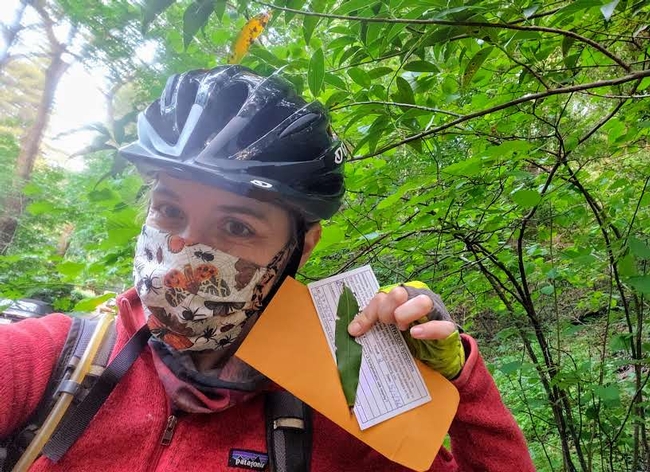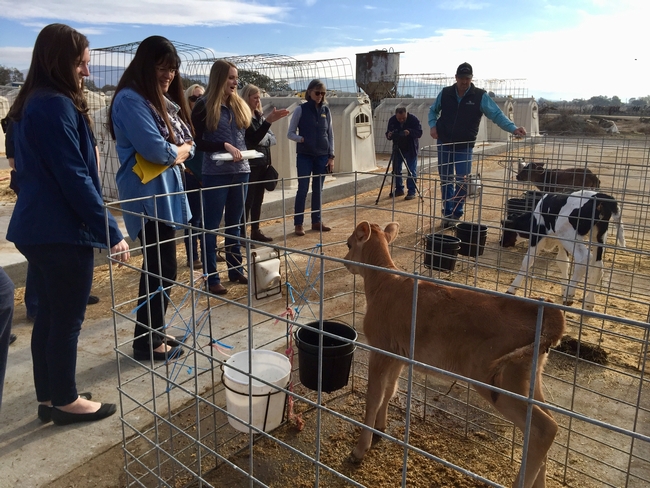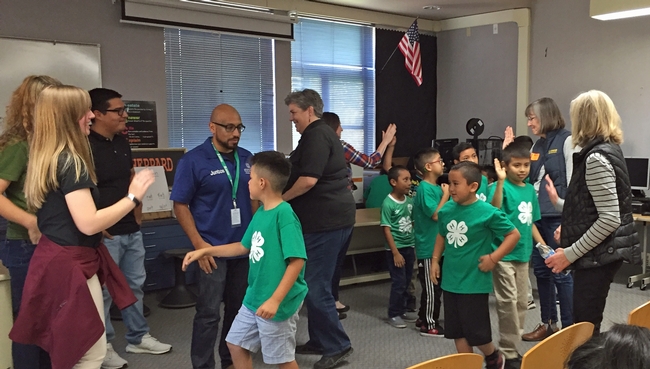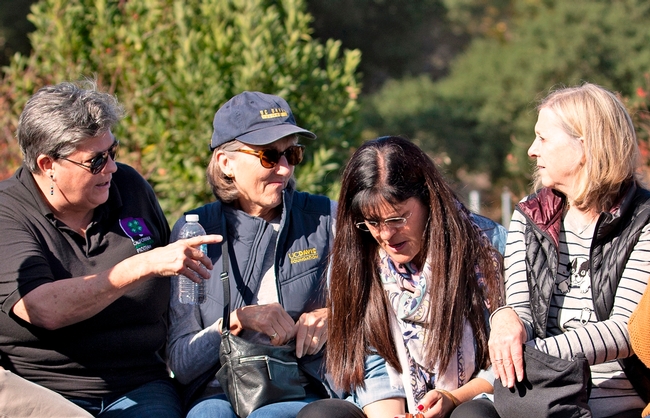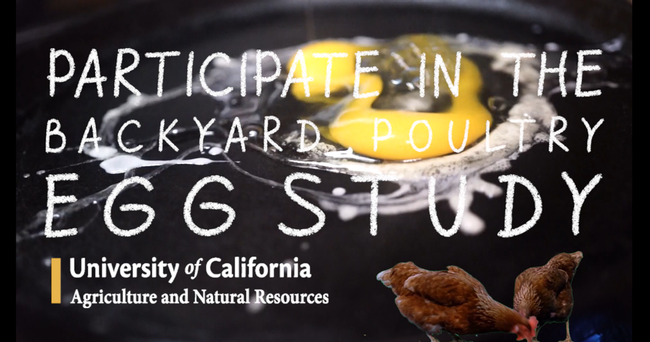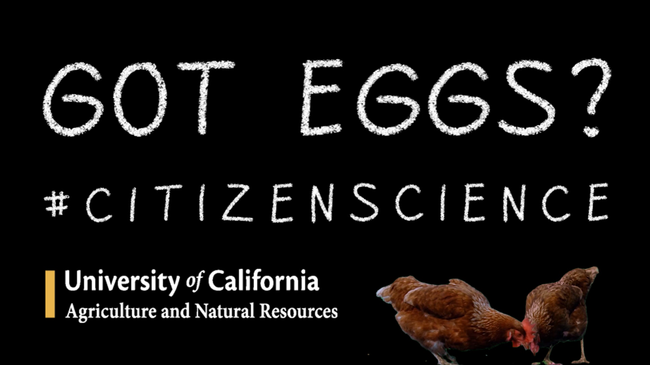- Author: Kerry Wininger
- Editor: Karen Giovannini
Sonoma county residents love their oak trees, and with good reason: Oak woodlands are a source of immense value not just to the more than 330 types of animals and hundreds of other organisms they support, but also to the cultural, economic, and social fabric of our society. Sudden oak death (SOD) threatens to unhinge these systems, imperil biodiversity, create hazard trees or fuel for fires, and potentially infect agriculturally or horticulturally important plants. So whether it means adapting educational events to virtual spaces, delivering materials by mail, training online, answering home phones instead of staffing the Master Gardener desk, or collecting leaves for the SOD blitz by bicycle while wearing a mask and social distancing, the UCCE Sonoma SOD Program is not letting COVID-19 slow us down.
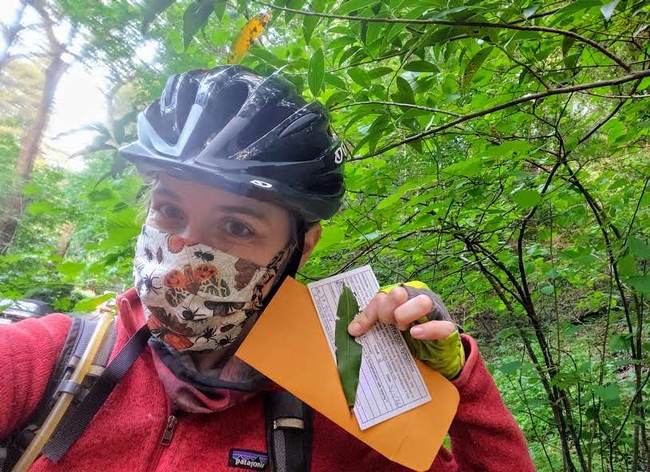
A key endeavor of this group is the yearly Sudden Oak Death Blitz in partnership with UC Berkeley's Forest Pathology and Mycology Lab. This state-wide citizen science project allows landowners to receive free testing of California bay laurel and tanoak leaves, contribute to long-term scientific research, and update the SOD Map Mobile app used by landowners and professionals to assess disease risk in their area. As SOD Blitz creator Dr. Matteo Garbelotto wrote in a letter addressed to all Californians about this year's program,
“The SOD Blitzes have become a tradition for many, while providing key information to help us save our oaks from a devastating disease.”
UCCE Sonoma hosts six blitz events annually whereas most counties hold just one, and we were eager to test new areas of tree mortality that were discovered after last-year's blitz had already passed. Here's how we made it work:
- Training took place online.
- Three Zoom sessions were set up with SOD team members for participant questions.
- Collection packets were mailed to most participants, and the rest picked up following strict safety guidelines supervised by staff.
- Leaves were collected at homes and on public land by walkers, cyclists, and others engaging in outdoor exercise.
- Kashia Pomo staff continued to sample on their land.
- In collaboration with SSU's Center for Environmental Inquiry, we hosted the only SOD blitz in the state that was fully bilingual in Spanish and English.
Despite limitations posed by COVID-19 regarding how to train volunteers, access areas where leaves could be sampled, and safely pass materials and samples between participants and blitz organizers, this year's campaign is on track to be even more successful than 2019. Returning leaves by mail instead of in-person allowed residents on the coast and other remote areas to participate easily, leading to a better geographic distribution of sampling. Online trainings and Q&A sessions, though less personal and lacking physical demonstrations, encouraged people with schedule constraints to give the blitz a try. One participant with extra time on his hands reported that he thought this was a great way to give back to the community in a time of need. Based on the number of participants and collection packets requested, we estimate a 15% increase in sampling from last year, including all major areas of Sonoma county and most of Mendocino county.
And things are just getting started. Though a SOD-themed Plant Walk with the local Milo Baker chapter of the California Native Plant Society was postponed, discussions are underway about creating a live virtual field trip in its place, complete with 360 degree photos of highlighted spots along the trail. Similarly, SOD Specialist Master Gardeners have been presenting at public library series' for years, and are now hoping to create a recorded version to be posted on UCCE Sonoma's Sudden Oak Death webpage. Check back for announcements on these and other happenings.
Our gratitude goes out to every volunteer who has invested their time in staying educated, spreading the word, and participating in citizen science with us over the years, especially during the current shelter-in-place, with special recognition for our dedicated team of SOD Specialist Master Gardeners. We couldn't help our oaks without you!
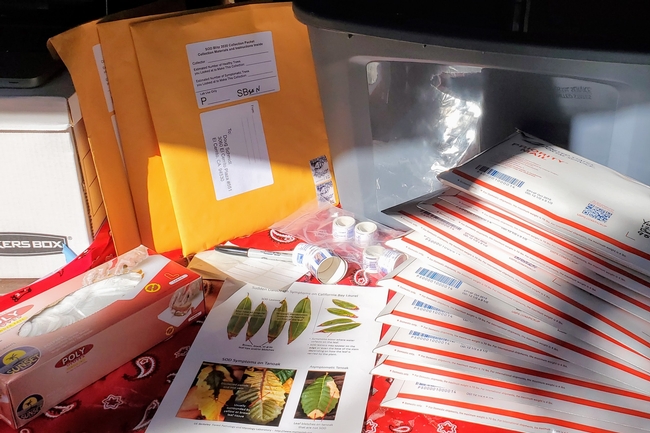
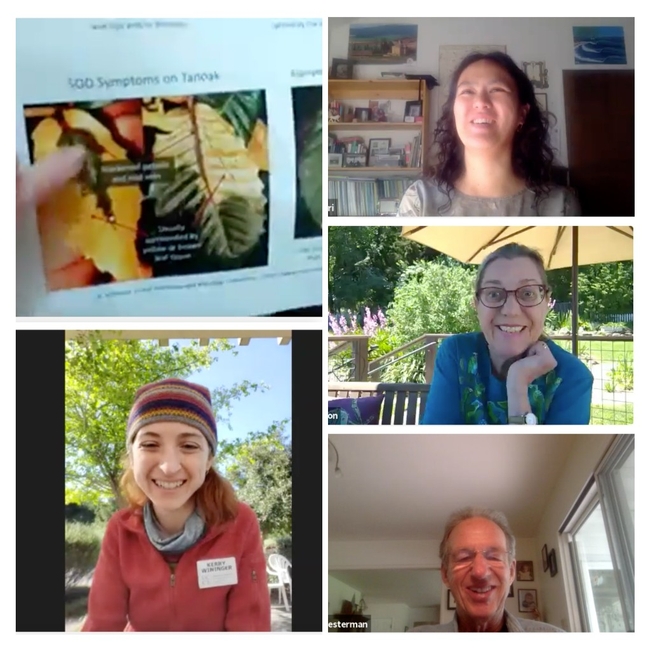
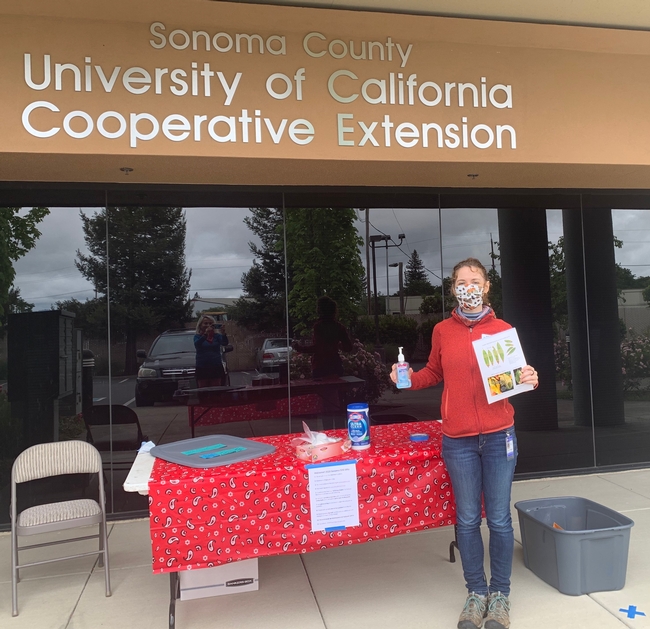
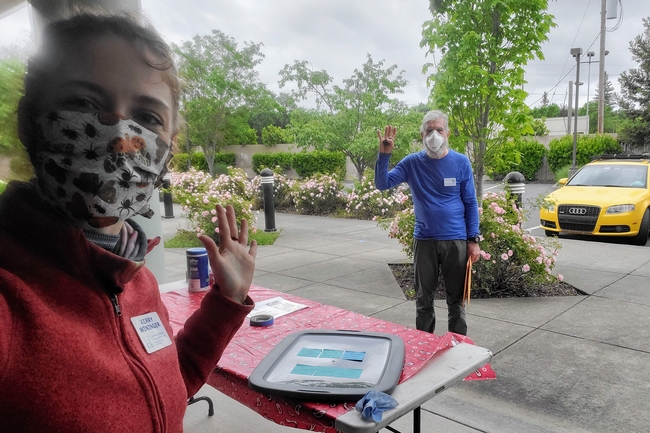
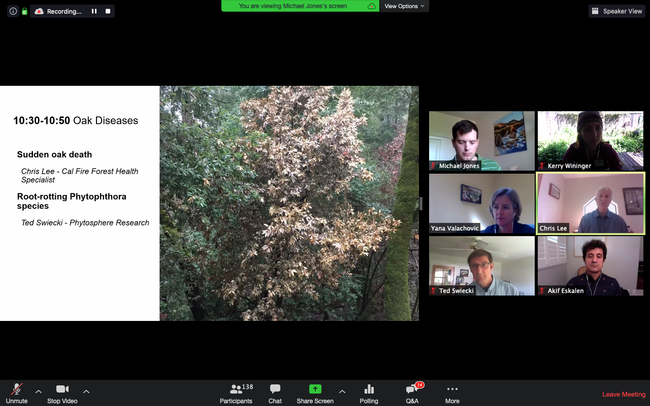
- Author: Pamela Kan-Rice
Vice President Glenda Humiston introduced alumni regent-designate Debby Stegura to UC Cooperative Extension staff and their community partners and clientele in Sonoma County on Nov. 15.
After visiting Beretta Dairy, Bayer Farm Park and Gardens, Sheppard Elementary and Stuhlmuller Vineyards, Regent Stegura tweeted:
“Blown away by @ucanr tour of @UCCESonoma work—Beretta Dairy, @UCMasterGarden, @Stuhlmullerwine, @California4H. Saw #kincaidfire reach, how to prepare better for future fires. @ucanr work benefits all of CA. Thank you!”
The retired business litigator and UC Davis alumna was joined on the tour by Anne Shaw, secretary and chief of staff to the regents, and Michael Bedard, UC state government relations legislative director.
Stephanie Larson, UCCE director for Sonoma County, led the tour, which first visited Beretta Dairy.
“It's so nice to have a dairy advisor,” Sonoma County dairy farmer Doug Beretta said, crediting Randi Black, UC Cooperative Extension dairy advisor, with providing the technical assistance he needed to apply for a grant to reduce methane emissions.
Black, who joined UC ANR in 2017, helped four local dairies obtain grants totaling $2.5 million and said the projects propose to reduce emissions by 9,327 metric tons of CO2 equivalent over the next 5 years, which is comparable to removing 2,028 passenger vehicles from the road for a year.
Beretta talked about the work he has done at the dairy, based on UC research, to improve water quality. David Lewis, UCCE director for Marin and Napa counties, noted that similar manure management and water-quality work is being implemented by UCCE clientele in his counties.
Discussing the hardships created by low milk prices in the dairy industry, Beretta said he appreciated UCCE's agricultural ombudsman Karen Giovannini guiding producers who want to sell value-added products through the permitting process.
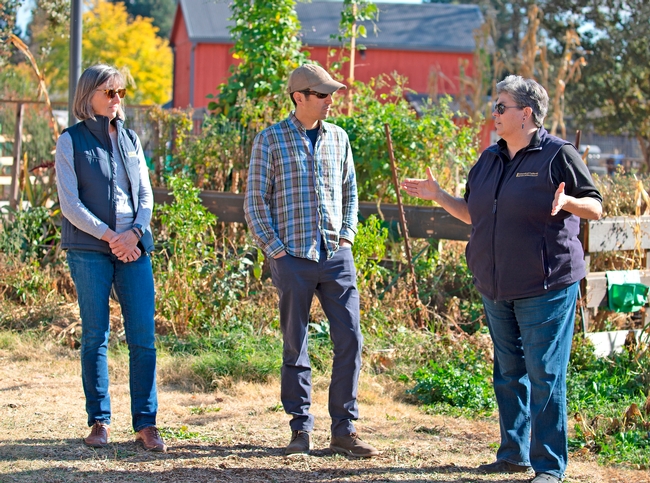
From the dairy, Stegura and the group met with Mimi Enright, UC Master Gardener Program manager for Sonoma County, UC Master Gardener volunteers and Julia Van Soelen Kim, North Bay food systems advisor at Bayer Farm Park and Gardens.
Collaborating with Bayer Farm, the Master Gardeners have been expanding outreach to Spanish-speaking members of the community. In addition to all of the traditional Master Gardener outreach, the Master Gardeners in Sonoma County have been actively promoting firewise landscaping to help Sonoma County residents better prepare for wildfires. Using UC ANR materials is critical, Enright said, to assure people the recommendations are based on scientific research. 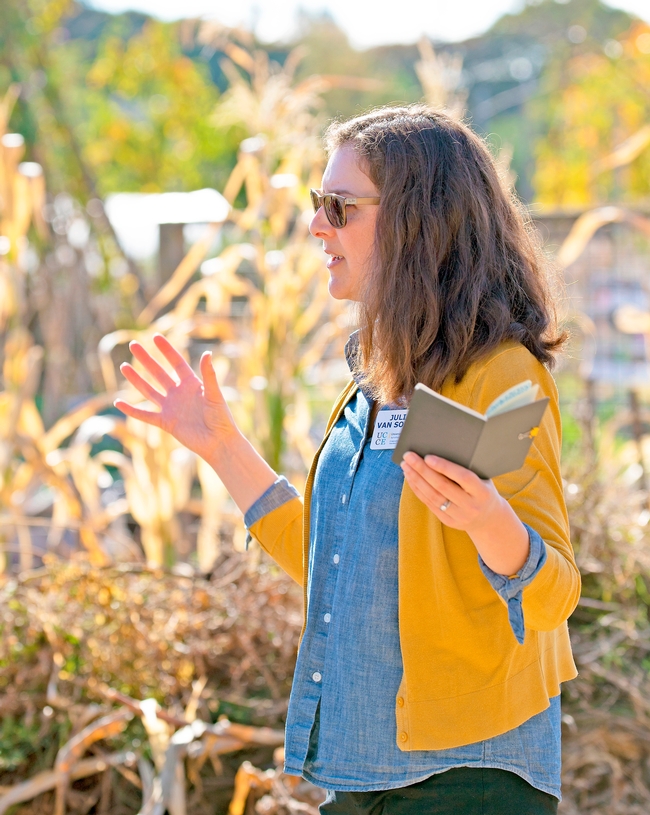
After the wildfires in 2017, Van Soelen Kim and Enright launched a citizen science project with community partners to assess produce safety. Within days of the fire, volunteers collected 200 samples of leafy greens from school, backyard and community gardens. With funding from UC ANR and the Bay Area Air Quality Management District, they expanded testing to soil and partnered with UC Davis researchers to test eggs laid by backyard poultry, and published guidance for produce safety after urban wildfire.
After the Kincade Fire, when growers and gardeners asked if produce grown outdoors was safe to eat, Enright said UCCE Sonoma County could tell them, based on local research, it was safe to eat if consumers removed outer leaves and washed the produce and that the health benefits of eating fresh produce outweigh any trace contamination.
UCCE has been leading a coalition of community partners and government organizations to educate the community on reducing food waste and increasing food recovery. When PG&E announces public safety power shutoffs, they promote composting food that can't be eaten so it doesn't end up in a landfill.
“This kind of service in communities is not as well-known about UC as the campuses,” Humiston commented to the regent.
Across the street from Bayer Farm, Diego Mariscal, 4-H program assistant, has been collaborating with Sheppard Elementary School. It is one of several schools in the county providing 4-H afterschool clubs and other 4-H programs designed to nurture the next generation of Latino leaders. Last spring, Mariscal worked with families to build a 4-H soccer league for elementary school children. Parents, college and high school students were trained by 4-H to teach children teamwork, soccer skills and healthy eating habits. More than 200 new underserved youth participated in 4-H programs in Sonoma County during the 2018-2019 year.
A few of the soccer players, proudly wearing their green 4-H soccer uniforms, told the group what they liked about 4-H. 4-H All Star Corrianna E., who participates in the 4-H teen program, shared her experience in 4-H and expressed gratitude to the program for helping her overcome her shyness to become a strong public speaker. Corrianna's mother, Naomi Edwards, also shared her experience as 4-H Council President for Sonoma County.
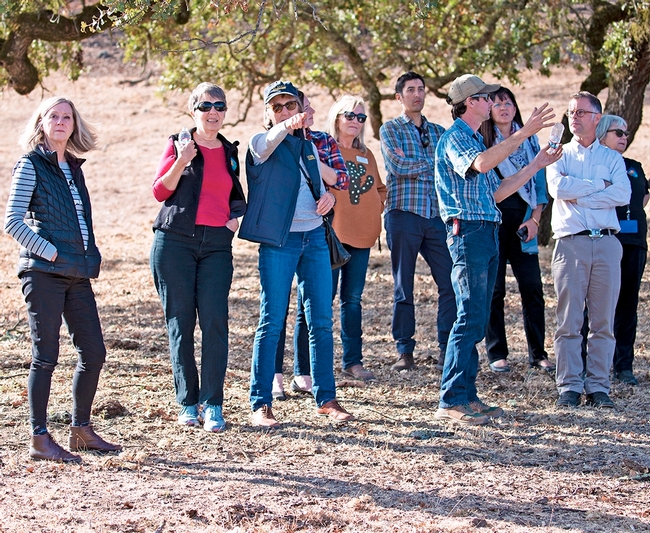
“You want to know what's a good cultural practice? Rhonda Smith has answers backed up by hard science,” Gorman said of the UCCE viticulture advisor. 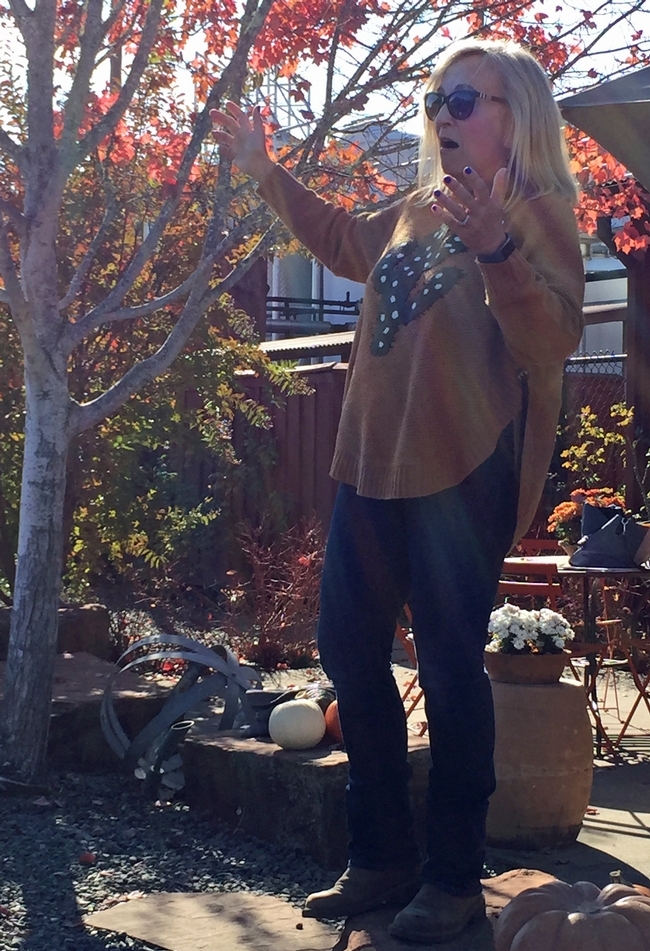
When new landowners ask Gorman for advice, he refers them to Steven Swain, UCCE environmental horticulture advisor, who advises small parcel land managers in Sonoma County on managing the land for fire and wildlife. “Without UCCE, where would they turn?” Gorman asked, adding that people from private companies may have recommendations that may not be in best interest of the land.
Larson introduced new UC IPM advisor Cindy Kron, who succeeds recent retiree Lucia Varela. Kron is launching an IR-4 project to study pesticides for olives, which isn't a big enough market to interest private investment in research. She's also monitoring pears for brown marmorated stink bug because early detection is key to controlling the pest. Spotted lanternfly isn't in California yet, but grapes are among its favorite hosts so Kron is working with UC Master Gardener volunteers and other community members to watch for the exotic pest.
The Kincade Fire destroyed fences and scorched the rangeland at Stuhlmuller Vineyards, forcing Gorman to sell the cattle. He showed the group where the fire failed to advance at the fire break created by the lush vineyards. As a result of the Kincade Fire, Gorman wasn't able to sell his petite verdot, chardonnay and cabernet grapes to wineries. To prove to the insurance company that smoke damaged the crop, his crew picked 30 tons of grapes for testing.
During and after the devastating fires in the North Bay, Larson, who is also a UCCE livestock and range management advisor, assisted livestock owners to gain access to their burned properties; this ensured their animals got food and water. She also organized resource meetings for landowners affected by fires, helping them apply for funding from government agencies and insurance companies for animal, forage and facility losses.
Larson also said her new grazing database Match.Graze has been well-received by ranchers and landowners in Sonoma and Marin counties who want to use grazing to reduce fire fuels. Land managers and grazers can sign up at ucanr.edu/matchgraze to hire sheep, goats, cattle and horses to manage fire fuels.
The regent tours in Sonoma Country and Fresno County were coordinated by Anne Megaro, government and community relations director. She is planning future tours for regents at UC South Coast Research and Extension Center and other locations in the spring.
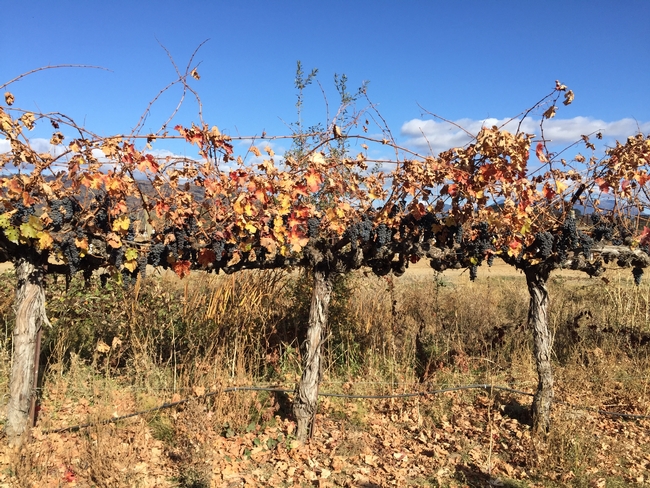
- Author: Karen Giovannini
backyard chicken eggs tested for FREE!


